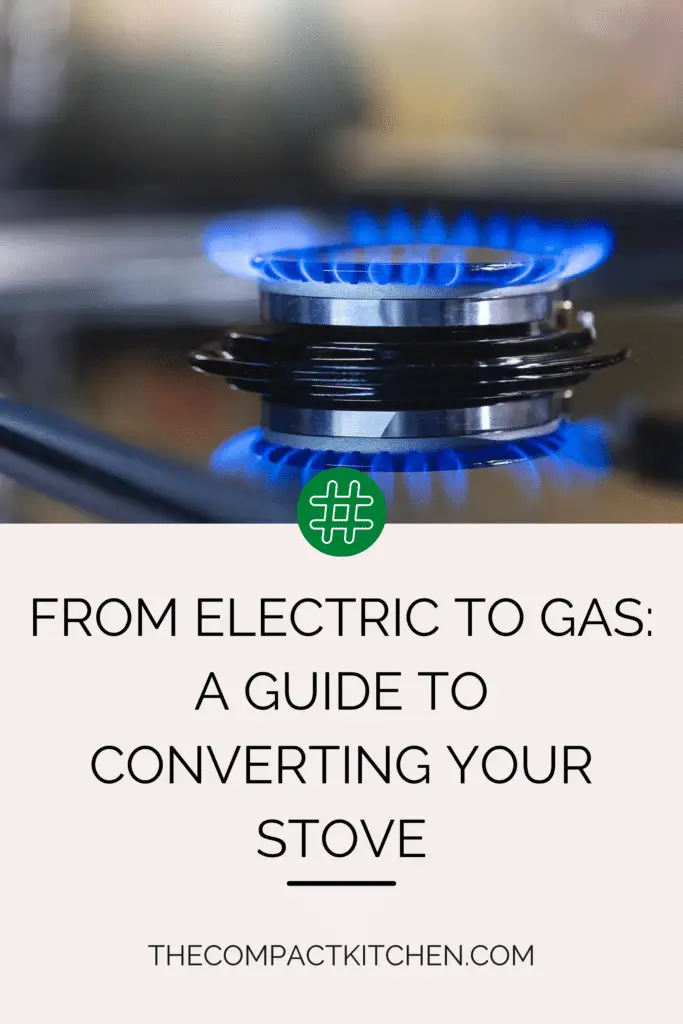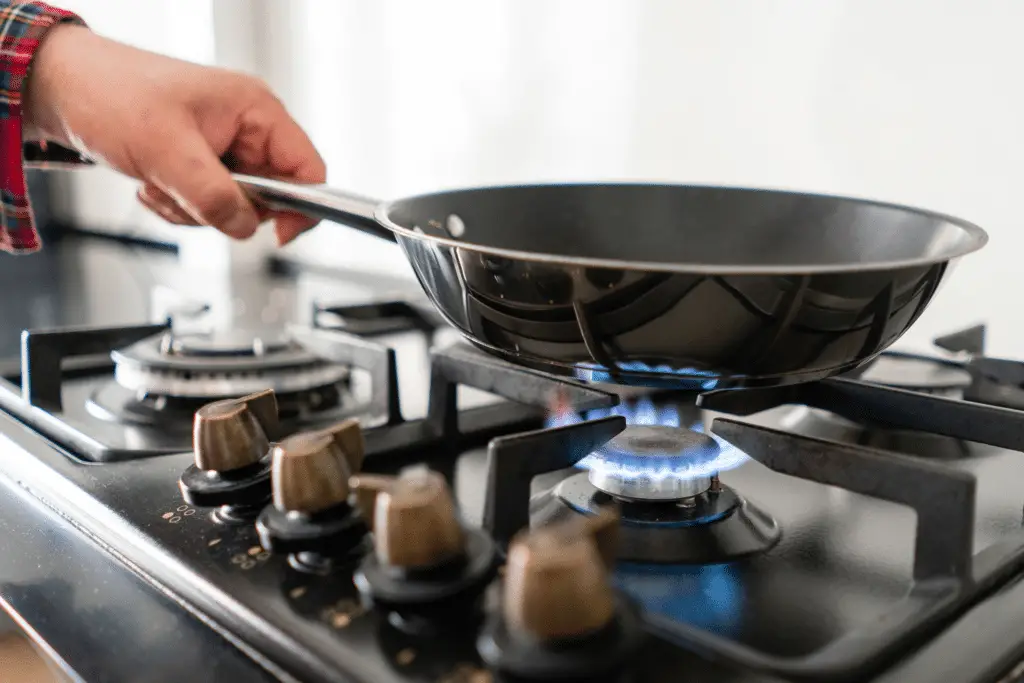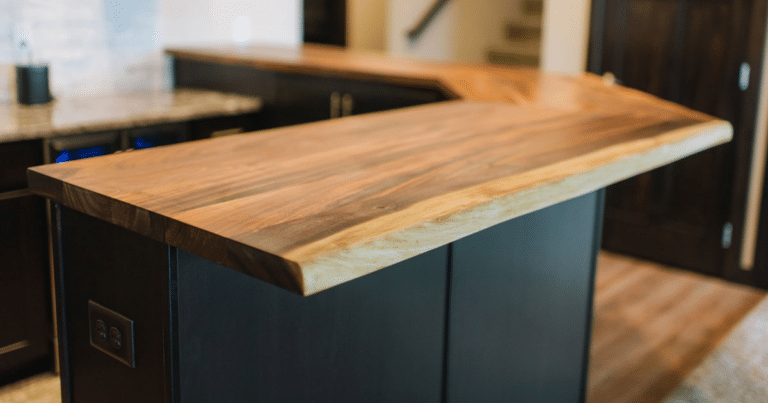Ready to make the switch from electric to gas stove? Discover the key benefits, costs, and safety measures involved in converting your kitchen appliance. Learn how to assess if your home is suitable for conversion and follow step-by-step instructions for a successful transition. Don’t miss out on essential post-conversion care tips to keep your new gas stove running smoothly. Let’s make cooking on gas a reality together!

When it comes to cooking, the type of stove you use can greatly impact your experience in the kitchen. If you’ve been considering making the switch from an electric stove to a gas stove, you’re not alone. Many homeowners are opting for gas stoves due to their efficient and precise cooking capabilities. In this section, we’ll delve into the reasons why converting your electric stove to gas might be the right move for you.
Understanding the Need to Convert Your Electric Stove to Gas
So, what exactly prompts the need for a conversion from electric to gas? Well, for starters, gas stoves are known for their instant heat control, allowing you to adjust the temperature quickly and cook your meals with precision. This is especially beneficial for dishes that require specific heat levels for optimal results. In addition, gas stoves are preferred by many chefs and home cooks for their ability to evenly distribute heat, leading to more consistent cooking outcomes.

When comparing gas and electric stoves, it’s important to weigh the pros and cons of each. Electric stoves are typically easier to clean and maintain, while gas stoves offer faster cooking times and cost savings in the long run. Consider your cooking habits and preferences to determine which type of stove aligns best with your needs.
Making the switch from electric to gas stove involves more than just changing the appliance in your kitchen; it’s a decision that can enhance your overall cooking experience and efficiency. By understanding the benefits and drawbacks of gas and electric stoves, you can make an informed choice that suits your lifestyle and culinary aspirations.
Understanding the Need to Convert Your Electric Stove to Gas
When it comes to choosing between an electric stove and a gas stove, there are various factors to consider. From cooking performance to energy efficiency, each type of stove has its pros and cons. Before making the decision to convert your electric stove to gas, it’s essential to understand the need for such a switch.

One of the main reasons why homeowners opt for gas stoves is the precise control they offer over the cooking temperature. Unlike electric stoves, which can take some time to adjust, gas stoves provide instant heat that can be easily adjusted according to your cooking needs. This level of control can make a significant difference in the quality of your culinary creations.
Another factor to consider is the energy efficiency of gas stoves compared to electric stoves. While electric stoves can be more costly to operate, especially in areas with high electricity rates, gas stoves are generally more cost-effective in the long run. The savings on energy bills can be a compelling reason for many homeowners to convert their electric stove to gas.
Evaluating the Cost and Feasibility of Conversion
Determining if Your Home Meets the Necessary Conditions for Conversion
Before embarking on the journey of converting your electric stove to gas, it’s crucial to ensure that your home meets the necessary conditions for such a conversion. One of the primary requirements is having access to a gas line in your kitchen. If your home is not already equipped with a gas line, the installation process can be more complex and costly.

Additionally, you’ll need to consider the ventilation requirements for gas stoves. Gas stoves produce combustion byproducts that need to be properly vented to ensure safety. If your kitchen does not have adequate ventilation, you may need to make modifications to meet the necessary safety standards.
Understanding the Financial Implications of Stove Conversion
Converting your electric stove to gas is not only a technical process but also a financial decision. The cost of gas stove conversion can vary depending on the complexity of the installation and any necessary upgrades to your kitchen. It’s essential to budget for potential expenses, such as hiring a professional installer, purchasing new gas appliances, and making any required modifications to your kitchen.

While the initial cost of converting to a gas stove may seem daunting, it’s important to consider the long-term benefits and savings that come with using a gas appliance. By evaluating the cost and feasibility of conversion, you can make an informed decision that aligns with your budget and cooking needs.
Steps to Convert an Electric Stove to Gas
Switching from an electric stove to a gas stove can be a game-changer in your kitchen. Not only does it offer precise temperature control and faster cooking times, but it can also add a touch of elegance to your culinary space. If you’re ready to make the leap, here are some detailed guidelines to safely and effectively convert your electric stove to gas.
1. Consult a Professional
Before you start the conversion process, it’s crucial to consult with a qualified professional. They can assess your home’s infrastructure and determine if it’s suitable for a gas stove installation. From checking gas line connections to ensuring proper ventilation, having expert guidance can prevent any safety hazards down the line.
2. Prepare Your Kitchen
Once you’ve received the green light from a professional, it’s time to prepare your kitchen for the conversion. Start by turning off the power to your electric stove and disconnecting it from the electrical outlet. Clear out any clutter around the stove area to allow for a smooth installation process.
3. Install the Gas Line
Next, it’s time to install the gas line that will fuel your new stove. This step should only be undertaken by a licensed technician to ensure compliance with safety standards. The gas line must be properly connected to the stove and securely fastened to prevent any leaks or malfunctions.
4. Adjust the Gas Settings
Once the gas line is in place, it’s essential to adjust the gas settings on your stove. This may involve tweaking the flame height or calibrating the burners to achieve optimal cooking performance. Your technician can guide you through this process and make any necessary adjustments to ensure everything is running smoothly.
5. Test Your New Gas Stove
After the installation is complete, it’s time to test your new gas stove. Turn on the burners and oven to check for any irregularities or malfunctions. Make sure to follow the manufacturer’s instructions for proper usage and maintenance to maximize the lifespan of your new appliance.
6. Enjoy Your Upgraded Kitchen
Congratulations! You’ve successfully converted your electric stove to gas and transformed your kitchen into a culinary oasis. Enjoy the benefits of precise temperature control, faster cooking times, and enhanced cooking experience that a gas stove can offer.
By following these steps and working with professionals, you can convert your electric stove to gas safely and effectively. Say goodbye to the limitations of electric cooking and embrace the versatility and performance of a gas stove in your kitchen.
Essential Safety Measures for Gas Stove Conversion
When converting your electric stove to gas, safety should be your top priority. Gas stoves can be a fantastic addition to your kitchen, providing even heat distribution and precise temperature control. However, it’s essential to take certain precautions to ensure the process is done safely and effectively.
Precautions During Gas Stove Conversion
Before you begin the conversion process, it’s crucial to turn off the gas supply to your home. This will prevent any potential leaks or accidents during installation. Additionally, make sure to have proper ventilation in place to allow any gas fumes to dissipate quickly.
When installing your new gas stove, double-check all connections to ensure they are secure and leak-free. It’s also wise to have a professional plumber or gas fitter inspect the installation to verify everything is up to code.
Common Safety Concerns
One common safety concern with gas stoves is the risk of a gas leak. To mitigate this risk, make sure to regularly check for any signs of a leak, such as a distinctive odor or hissing sound. If you suspect a leak, immediately turn off the gas supply and contact a professional for assistance.
Another safety consideration is the potential for carbon monoxide poisoning. Gas stoves produce this colorless, odorless gas, which can be harmful or even fatal if inhaled in large quantities. To prevent carbon monoxide buildup, always use your gas stove in a well-ventilated area and install a carbon monoxide detector in your kitchen.
Addressing Safety Concerns
To address safety concerns during and after gas stove conversion, consider installing a gas leak detector in your kitchen. These devices can quickly alert you to any potential leaks, allowing you to take action before a dangerous situation arises.
It’s also essential to educate yourself and your family members on proper gas stove safety practices. This includes never leaving the stove unattended while in use, keeping flammable objects away from the stove, and always following manufacturer’s guidelines for maintenance and upkeep.
By taking these essential safety measures during and after your gas stove conversion, you can enjoy the benefits of your new appliance while ensuring the well-being of your household. Remember, safety always comes first when working with gas appliances.
Post-Conversion Care and Maintenance
So, you’ve successfully converted your electric stove to gas – congratulations! Now that you’ve made the switch and are enjoying the benefits of your new gas stove, it’s important to understand the necessary post-conversion care and maintenance to ensure its longevity and efficiency.
Necessary Steps After Conversion
After the conversion process is complete, there are a few important steps to take to ensure everything is functioning properly. First and foremost, make sure to carefully read and follow the manufacturer’s instructions for your specific gas stove model. This will help you understand how to operate and maintain your new appliance correctly.

It’s also a good idea to schedule a professional inspection of your gas stove to ensure that everything is installed correctly and safely. A trained technician can check for any leaks or issues that may arise from the conversion process.
Additionally, be sure to familiarize yourself with the new features and settings of your gas stove. Take the time to learn how to adjust the flame, control the temperature, and properly clean the burners and grates to keep your stove working efficiently.
Approaches to Maintenance and Longevity
To maintain the longevity and efficiency of your newly converted gas stove, there are a few key practices to keep in mind. Regular cleaning is essential to prevent food buildup and grease from affecting the performance of your stove. Make sure to clean the burners, grates, and stovetop regularly to avoid any potential issues.
It’s also important to check for any signs of wear and tear or malfunctioning parts. If you notice any unusual sounds, smells, or performance issues with your gas stove, don’t hesitate to contact a professional repair service to address the problem promptly.
Finally, consider investing in a maintenance plan or service agreement for your gas stove. Regular maintenance checks by a trained technician can help prevent costly repairs and ensure that your appliance is operating safely and efficiently for years to come.
By following these post-conversion care and maintenance tips, you can enjoy the benefits of your new gas stove for years to come. Remember, proper care and maintenance are key to maximizing the performance and longevity of your appliance!
Wrap Up: Sparking Up Your Kitchen with Gas!
Converting your electric stove to gas is a game-changer, offering efficiency and control in your cooking. Remember to assess the feasibility, follow steps diligently, prioritize safety, and maintain your new gas stove. Embrace the sizzle and simmer of gas cooking, and let your culinary creativity flourish! So, go ahead, make the switch, and ignite a new culinary adventure in your kitchen. Enjoy the benefits of gas cooking and never look back!








